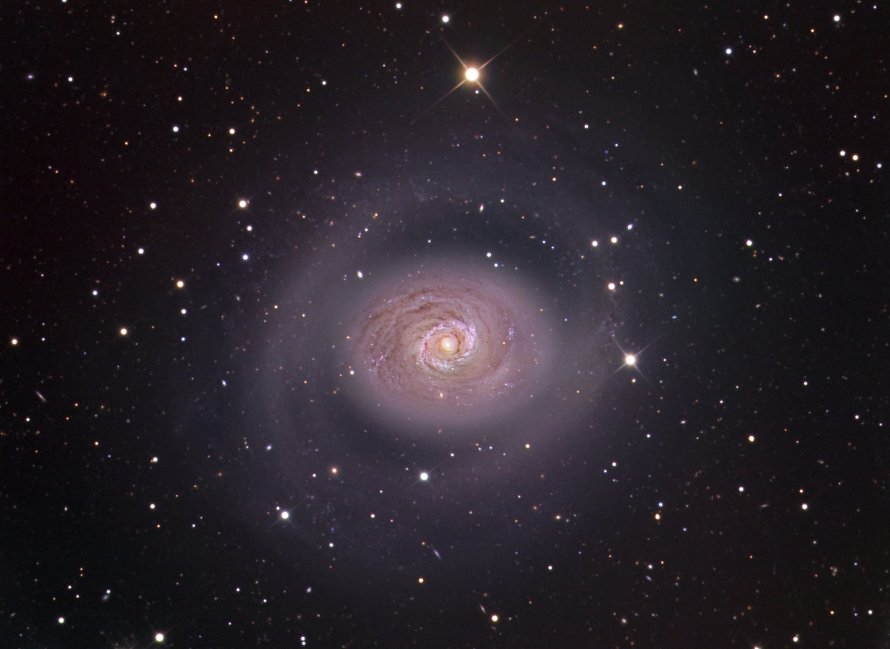M94 (NGC 4736) - Cat's Eye Galaxy
Messier 94 (NGC 4736), also known as the Cat's Eye Galaxy, is a spiral galaxy located in the constellation Canes Venatici in the CVn I Group of galaxies. M94 is 16000000 light years away from Earth.
M94 is best viewed during early spring, is magnitude 9, and can be viewed with binoculars. M94 is 11.2' x 9' in apparent size. For reference, the full moon is 30'.
Observing difficulty: Intermediate
- Name:
- Cat's Eye Galaxy
- Alt name:
- Croc's Eye Galaxy
- Type:
- spiral galaxy
- Constellation:
- Canes Venatici
- NGC or IC:
- NGC 4736
- Magnitude:
- 9
- Viewing:
- binoculars
- Size:
- 11.2' x 9'
- Distance (light years):
- 16000000 LY
- RA:
- 12h 50.9m
- Dec:
- 41 8'
- Season:
- early spring
- Galaxy group:
- CVn I Group
- Messier Marathon #:
- 41
* The naked eye can see up to magnitude ~7-8 objects under ideal dark sky conditions.
An In-depth Look at the Cat's Eye Galaxy
Located in the northern constellation Canes Venatici, the hunting dogs, Messier 94 (also known as M94 or NGC 4736) is a unique spiral galaxy that piques the curiosity of astronomers and star-gazers alike. It was first discovered by Pierre M?chain in 1781 and later cataloged by Charles Messier.
Characteristics of Messier 94
Messier 94 is known for its well-defined structure which includes two concentric rings. The inner ring, sometimes referred to as the starburst ring due to its high rate of star formation, has a radius of approximately 2900 light-years. The outer ring, fainter and sparsely populated, extends nearly 70000 light-years from the galaxy's core. These rings have led to discussions about the galaxy's structure and star formation processes.
Further adding to M94's intrigue is its status as an active galaxy, possessing a Seyfert II nucleus. This nucleus type is associated with high energy outputs possibly related to a supermassive black hole at the galaxy's core.
Magnitude and Distance
With an apparent magnitude of 8.9, Messier 94 is not visible to the naked eye but can be easily spotted with amateur telescopes or binoculars. The galaxy is about 16 million light-years away from Earth, placing it within the local universe. Its absolute magnitude, an indicator of its true brightness, is estimated to be -21.
Finding and Observing Messier 94
Messier 94 resides in the constellation Canes Venatici, located below the handle of the Big Dipper (Ursa Major). The galaxy is found along an imaginary line drawn between the stars Beta and Gamma Canum Venaticorum. Despite its distance and relatively low brightness, M94 can be observed with a small telescope under dark skies.
In a small telescope, M94 appears as a small, round glow with a brighter center. Larger telescopes may reveal the inner starburst ring as a faint halo around the galaxy's core. The outer ring is generally too faint to be seen except in larger amateur telescopes under excellent conditions.
Observations of M94 are of significant interest to astronomers, particularly in studying star formation. Its distinct starburst ring and the intriguing faint outer ring provide unique insights into the structure of galaxies and the life cycles of stars. To the amateur observer, M94 offers a chance to observe a distant and unique galaxy from one's own backyard.



